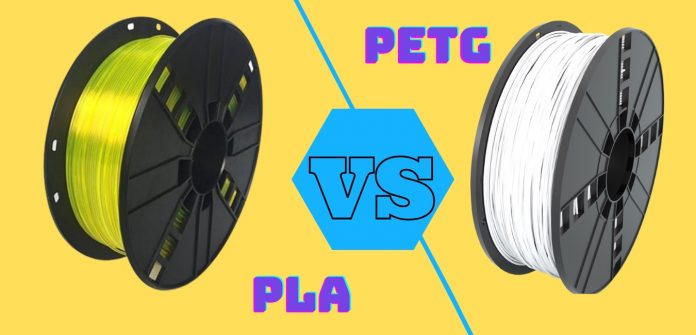PLA and PETG are two of the most popular types of filaments for 3D printers. So, should you use PLA or PETG? Both options are suitable for a variety of 3D projects but provide separate advantages and disadvantages. If you want the best results from your 3D printer, explore the features, pros, and cons of PLA and PETG.
What is PLA ?
Polylactic acid (PLA) is a type of thermoplastic made from renewable materials, such as corn starch, sugar cane, potatoes, and tapioca roots. PLA was created in the 1930s and mass-produced starting in the 1980s. It was one of the
first materials used for 3D printers, along with ABS. It remains a popular choice due to its versatility and cost-efficiency.
What is PETG ?
Polyethylene terephthalate glycol (PETG) is a type of polyester used for a diverse range of applications, due to its overall durability. It is often used for packaging, electronic insulators, advertising displays, and DIY 3D-printed objects.
Top PLA and PETG Filament Manufacturers
The quality of your 3D-printed items depends on which brand you choose. Some of the least expensive options are more likely to produce poor results. Here are some of the most trusted PLA and PETG filament manufacturers:
- GEEETECH
- OVERTURE
- Amazon Basics
- Inland
- MIKA3D
- EAZEEMATS
Keep in mind that these are just a few of the most popular manufacturers. Many other companies produce quality 3D printer filament. Pay attention to the following features when comparing products:
- Cost
- Durability
- Ease of use
- Food safety
- Compatibility
PLA Vs PETG – Which Is More Expensive?
PLA filament is often a little less expensive compared to PETG of the same quality and size. PLA products cost about $15 to $20 per kilogram. PETG products cost about $30 to $40 per kilogram.
PLA Vs PETG – Which Is More Hygroscopic?
PLA and PETG are both hygroscopic. However, PETG may be slightly more hygroscopic compared to PLA.
Hygroscopic materials absorb moisture from the air, which can make the product more brittle. Highly hygroscopic material is also more likely to have a rough texture.
PETG-printed objects may have a rough, yet slippery appearance if you do not properly configure the printer settings.
While PETG is slightly more hygroscopic, PLA is typically more brittle. PETG provides increased flexibility, which helps protect against snapping or breaking.
Is PLA or PETG Stronger?
PETG is typically stronger compared to PLA. The increased flexibility and overall strength of the material decrease the risk of damage. It also has better resistance to low and high temperatures, making it suitable for use outdoors.
PLA and PETG Food Safety
PLA is a bioplastic made from natural materials, including corn starch and potatoes. A safety assessment of PLA found that it is generally recognized as safe (GRAS) for food products.
PETG is also typically considered a food-safe plastic. It is often used for food containers.
Yet, some manufacturers include additives in PLA and PETG filaments to adjust the color or strength of the 3D-printed objects. The additives are not always food-safe.
If you need 3D printer filament for holding or storing food, look for natural PLA and PETG products, such as Inland 1.75mm Natural PLA Pro or 3D Solutech Natural Clear 1.75mm PETG 3D Printer Filament 2.2 LBS .
Best 3D Printers for PLA and PETG
The best-selling 3D printers support both PLA and PLETG filaments. In fact, most of the following options also support ABS, TPU, and other materials:
If you choose a 3D printer that does not appear on this list, make sure that it supports that type of filament that you intend on using.
Final Thoughts
PLA and PETG are both suitable for a wide range of 3D printing applications, including creating miniatures or food containers.
PLA is typically a little less expensive and more forgiving, which reduces the risk of errors. It is also less likely to stick to the build surface. These features make PLA great for beginners.
The main advantage of PETG filament is its strength and flexibility. PETG offers greater protection against breaking or snapping. It is also better suited for outdoor applications, as cooler temperatures may deform PLA-printed objects.
If you are new to 3D printing, consider starting with PLA filament. If the durability of your 3D objects is a concern, try using PETG filament.














